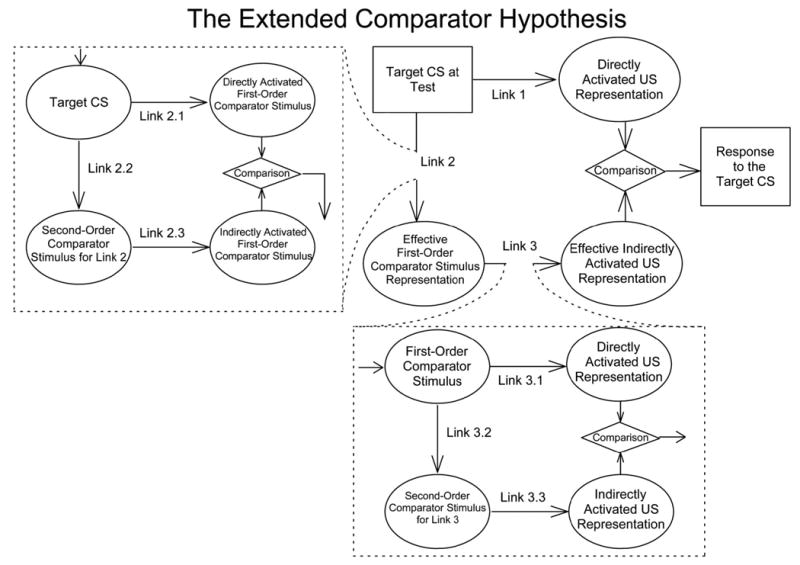Figure 1.

The extended comparator hypothesis (Denniston et al., 2001). CS = conditioned stimulus, US = unconditioned stimulus. Ovals represent stimulus representations, and rectangles represent the physical test stimulus and response. Conditioned responding to the target CS is determined by both the directly and the indirectly activated US representation at the time of testing: Direct activation of the US representation (Link 1) is positively correlated, and indirect activation of the US representation (the product of Links 2 and 3) is negatively correlated with the magnitude of conditioned responding. In the original comparator hypothesis (Miller & Matzel, 1988), responding to the target CS is down-modulated only by the absolute strength of Links 2 and 3, whereas in the extended comparator hypothesis, the effectiveness of each of these two comparator links is potentially influenced by its own comparator processes.
